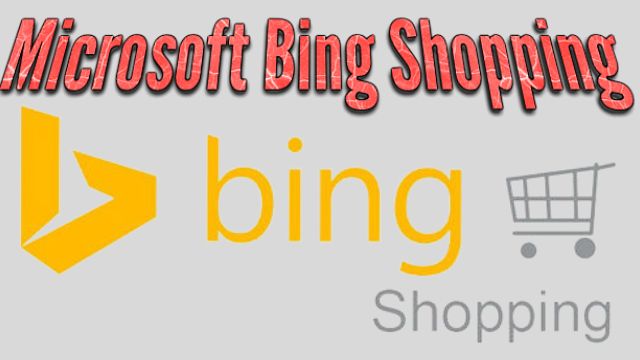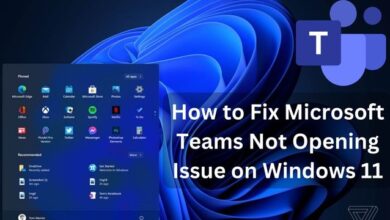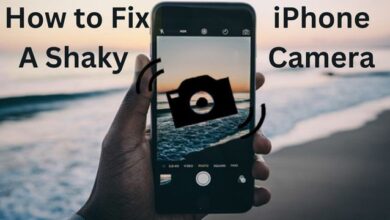Microsoft Bing Shopping

The addition of new customer-focused tabs to Microsoft Bing Shopping will make it easier for users to find what they’re looking for all in one location.
Many shops would prefer that customers arrive on-site to evaluate the worth of their offerings and encourage value-based purchases.
The buy now and checkout alternatives, however, can result in less friction during the actual purchase. In any case, it’s worthwhile to take part as long as the Shopping product is still expanding.
The new tabs group available online shopping alternatives under headings like:
- Stores
- Deals
- Trending Products, and more.
According to the statement, “These expanded alternatives give helpful hover menus and informative page guides which emphasize choices, deals, and trends.”
The alternatives for retailers are expanding as the holiday shopping season approaches. Google and Microsoft are both making investments in strategies to help small merchants and big-box stores be where customers need to discover them (along with Facebook and other social channels).
Summit Chatterjee, Lead Product Manager at Microsoft Shopping, spoke with Search Engine Land about the future of Shopping at Bing and how the product roadmap will continue to aid consumers and merchants in finding one another.
How Microsoft Bing Shopping has worked in the past
Microsoft Bing Shopping used to be heavily search-driven and frequently only featured items from advertisers who paid for their products to appear in the listings and carousels.
The business gave participating businesses that used the Merchant Center access to an organic shopping listing option in August of last year.
The feed-based system started out small but has subsequently expanded. However, before this choice existed, only marketers who paid to have their goods appear in listings could receive traffic from this area of Bing Shopping.
Bing Shopping moving up-market
Microsoft is advancing Shopping up the funnel in addition to upgrading the tabs for shopping. The business declared that Edge would soon offer shopping choices.
In the address bar of Microsoft Edge while shopping, users will now have “quick access to online expert reviews and customer ratings for over 5 million products.” New shopping options that specifically target the Windows user base are available alongside purchasing done directly from your browser.
Becoming a shopping recommendation engine
The new direction for Microsoft Bing Shopping is to become a recommendation engine above just a search engine. Microsoft has identified three key categories of Bing users: trend seekers, passive consumers, and deal seekers.
The shopping experience will soon become “query-less,” using privacy-focused shopper data. Making recommendations “for you” will “offer another dimension for users.” Based on these customer categories and the general trends it is observing in the retail scene, Bing will be able to tailor its buying recommendations.
Bing shopper types
People that are interested in trends look for Microsoft Bing shopping advice based on what other people are currently purchasing.
Fashion, popular Christmas toys, or any other popular product or product category, for example. Microsoft will offer suggested bargains for these types of purchasers based on what the platform is seeing everyone else buy and the best pricing possibilities for buyers.
The “highly rated” indicator will also demonstrate how well-reviewed a popular item is among consumers. The recommended or “for you” discounts area would also be helpful to passive shoppers.
They might just be browsing out of curiosity or boredom, so the tailored recommendations and sales alerts might be what convinces them to make a purchase.
Stores have to opt in to make it work
Stores must choose to provide their “entire corpus of items” for customers in order for the strategy to be successful for both consumers and retailers. Currently, they can access the Merchant Center to achieve that:
No action is necessary from you if you already use Microsoft Shopping Campaigns to participate. Every product offer that has been accepted in the Microsoft Merchant Center will be automatically selected for.
Create a Microsoft Merchant Center store, upload all of your eligible products, and make sure they are authorized if you are not a Microsoft Shopping Campaigns customer.
Your products are qualified to appear in the free products listings portion of Microsoft Bing Shopping Tab because you have chosen to participate in the free Product Listings offering when the Merchant Center store is built.
The new Shopify integration from Microsoft Bing is another way they’re making this process as simple as possible for merchants.
Microsoft Channel app within Shopify currently allows businesses to show up automatically in the Microsoft Bing Shopping tab and the Microsoft Start Shopping tab for free as product listings.”
Going from a price comparison tool to a shopping destination
Microsoft Bing Shopping product roadmap includes additional capabilities that will make purchasing easier. Bing Shopping integrates rapid checkout and shipping right into Bing Shopping in an effort to transform into a destination for online shopping in addition to a recommendation engine. Through Edge, customers will be able to complete their purchases:
- “Select guest checkout on the retailer’s website, then click Try express checkout in the address bar to use this option when shopping in Microsoft Edge.
- You can view your autofill information there if you’ve already utilized this option.
- Click “Try all coupons and autofill details” after checking the information to make sure it is accurate.
- The auto-fill feature imitates services like Amazon’s one-click purchase, enhancing customer convenience and lowering checkout barriers that lead to abandoned carts and lower conversion rates.
Bing shopping vs. Google shopping
There are more distinctions between Bing and Google besides price. When choosing where to invest advertising expenditures, other essential variances are crucial to take into account. They include:
More clicks for Microsoft Bing ads, more for Google product ads—with dollars flowing accordingly
Google receives 57 percent of its paid search clicks from its Shopping goods adverts. On Bing, however, they only make up 31% of paid clicks, with Microsoft Bing ads contributing the remaining 80%.
Spending on Microsoft Bing ads is up 15% year over year, while spending on Microsoft Bing ads is down 9%, showing that advertisers are putting their money where the clicks are.
In comparison, spending on Google product listings has increased 15% year over year as opposed to only 7% for text advertisements.
Google rules mobile
There is no denying that Google dominates mobile search, which is currently the most popular type of search.
Mobile searches account for 60% of all search traffic, and in the US, a staggering 94% of those searches are made on Google. In contrast, the combined market share of Yahoo and Bing is only 3% in the United States and 1.5% worldwide.
Bing users are wealthier and more established
Bing’s audience slightly leans toward white-collar workers as a corollary of its greater relative presence on desktop computers, making this group a desirable target market.
42 percent of Bing users are in the top quarter of income earners, and the majority have college degrees, are married, and have kids.
4 top reasons to use Bing Shopping
- Higher click-through rates and lower costs-per-action
- Easy integration with existing Google ad feeds
- Better tools for granular targeting
- A future-proof privacy edge
Higher click-through rates and lower costs-per-action
Depending on the exact sector vertical, click-through rates (CTR) on Bing are typically 45 percent higher than on Google. In addition, despite somewhat lower conversion rates (1.74 percent on Bing versus 1.91 percent on Google), the overall cost per desired action (i.e., the amount of ad spending required to produce each order) is 40 percent lower on Bing than it is on Google.
Easy integration with existing Google ad feeds
With a feed upload and conversion tool that cuts down on the time and resources needed for launch preparation, Bing provides a speedy springboard onto its ad platform for businesses already advertising on Google.
Better tools for granular targeting
Although there are enough similarities between the two ad systems to allow for a speedy transfer of Google ad feeds, Bing has a number of back-end features that allow for more exact targeting by ad group, device, and time zone.
Additionally, retailers on the Bing network can see more of the traffic coming from other sources than they can on Google. By more precisely focusing on their target markets, businesses can stretch their marketing budgets further.
A future-proof privacy edge
Leading technology companies have taken action in the past year to protect users’ privacy, most notably Apple’s decision to require express user consent before apps can collect personal data.
Microsoft, unlike Apple, doesn’t rely primarily on advertising for revenue, therefore it is better able to do away with intrusive ad-tracking methods.
As an illustration, Google has already postponed the end of third-party tracking until late in the following year, while Microsoft has provided an alternative to Google’s work-in-progress ad targeting solution that prioritizes privacy.
Although the specifics are intricate, the end result for retailers is that Bing’s ad capabilities are likely to pass muster even as privacy restrictions tighten, which means less retooling in the future.
Is Microsoft Bing shopping free?
Retailers do not have to pay for the clicks from the Product Listings part of the Shopping Tab. All goods must adhere to Microsoft Advertising rules. Policy & Opens in New Window for Product Ads.
Does Bing do Shopping ads?
Campaigns for Bing Shopping are comparable to AdWords campaigns. They enable product adverts from advertisers to appear on the Bing Search Network. They are now shown in a grid arrangement on the right side of the search results page. Each advertisement includes a picture, a description of the product, a price, and the name of the business.
How do I list a product on Bing?
You can choose from the options for the free product listing after creating the Merchant Center store. Finally, you can enable your approved products to be eligible to appear in the Bing Shopping Tab’s free product listings section.
- How To Create A Microsoft Account With Microsoft Email Address
- How To Reset Forgotten Password In Windows 10 and Windows 11
Is Bing safe?
Bing has an advantage over Google in terms of a few enterprise search features. For instance, Microsoft Search handles Bing search requests securely using HTTPS. This creates an end-to-end encrypted connection between users and Bing for increased security.
Is Bing good?
While Google is more concerned with E.A.T. and links, Microsoft Bing is more focused on on-page optimization and incorporates social signals. Especially in terms of its distinctive features, Microsoft Bing has developed over the past year and is now more competitive with Google.
Conclusion
Throughout the Bing Shopping canvas, there are 1 billion impressions each year. As Microsoft develops its commerce product offerings through Edge and Windows, that number will probably continue to rise.
It appears obvious that commerce marketers and even SMBs might profit from taking part in their Shopping roadmap since it is a free listing service that opts in retailers and search marketers with simple-to-use interfaces and feed-based systems.
The Bing Shopping tabs are already widely used by consumers to compare prices, which can make things appear to be commodities. Many shops would prefer that customers arrive on-site to evaluate the worth of their offerings and encourage value-based purchases. The buy now and checkout alternatives, however, can result in less friction during the actual purchase.
In any case, it’s worthwhile to take part as long as the Shopping product is still expanding.




